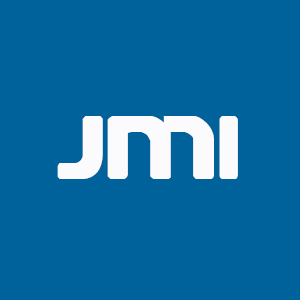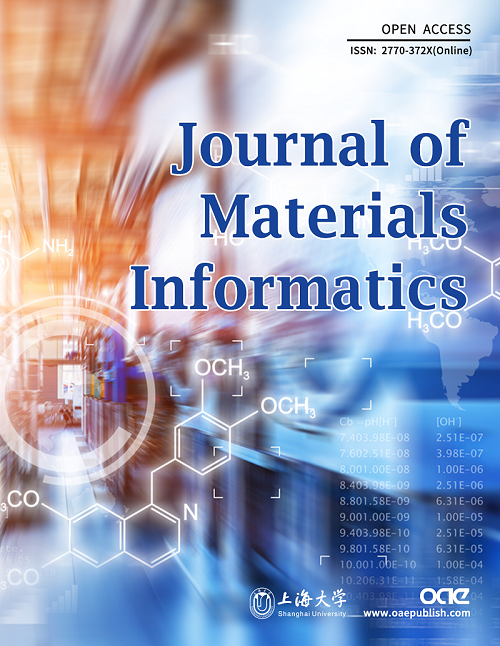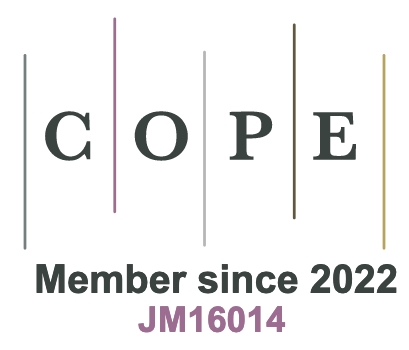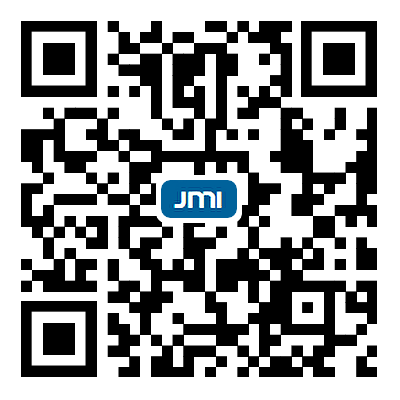Design of Fe2Mo@γ-GDY triatomic catalyst for electrocatalytic urea synthesis of N2 and CO: a theoretical study
Abstract
While urea is widely used as a chemical raw material, its precursor ammonia (NH3) has traditionally been synthesized under high-temperature/pressure conditions, leading to not only huge energy consumption but also serious CO2 emission. Here, we present a groundbreaking catalyst design approach, which optimizes adsorption configurations and reaction pathways by controlling the adsorption energies of each intermediate in the reaction, thus enhancing catalytic performance. Via density functional theory (DFT) calculations, we designed a triatomic catalyst [i.e., Fe2Mo@γ-graphdiyne (γ-GDY)] with a limiting potential of -0.22 V and a C-N coupling energy barrier of 0.34 eV. Notably, the Fe2Mo@γ-GDY catalyst presents a high selectivity and robust antioxidation capabilities under applied potentials. Our comprehensive analysis elucidates the factors affecting the limiting potential and C-N coupling energy barrier. These insights significantly contribute to the advancement of catalyst design strategies for electrocatalytic urea synthesis, offering a more efficient and eco-friendly alternative to traditional methods.
Keywords
INTRODUCTION
With a notable high nitrogen content of 46%, urea [i.e., CO(NH2)2] is widely used worldwide as a nitrogen fertilizer, whose annual synthesis has exceeded 100 million tons[1]. In addition, urea has various applications, such as cosmetic formulations, synthesis of engineered wood products, and monosodium glutamate[2]. As a consequence, sustainable and efficient urea synthesis is of great importance. In the present industry, the first step of urea synthesis relies predominantly on the Haber-Bosch process for ammonia (NH3) synthesis[3,4], which requires a high temperature (~700 K) and an elevated pressure (~100 bar). Here as well, as a second step, the energy-intensive Bosch–Meiser process that combines NH3 with CO2 to synthesize urea[5] necessitates elevated temperature (~423-473 K) and pressure (~150-200 bar)[6]. Annually, the entire synthesis process not only accounts for approximately 1% to 2% of total energy consumption[7], but also consumes 80% of global NH3 synthesis[8]. Therefore, it is imperative to develop a strategy for urea synthesis with clean, environmentally friendly, energy-efficient, and resource-conserving features.
Electrocatalysis is recognized as a promising alternative[9] since it directly converts N2 to urea under milder conditions, thereby bypassing the need for NH3 synthesis and significantly conserving energy and resources. The electrocatalytic strategy involves the Langmuir-Hinshelwood (LH) and Eley-Rideal (ER) mechanisms [Figure 1A]. The difference between them is that N2 and CO are co-adsorbed or not on the catalyst. Following the adsorption process, a key intermediate *NCON is formed through the C-N coupling. Then, hydrogenation of *NCON occurs gradually to form urea by the distal or the alternate mechanism. We note that the intermediate *NCON has been formed by Chen et al. through the LH mechanism and experimentally identified by analyzing the infrared spectrum vibration signal[10]. Over there, the energy barrier (Eb) of the C-N coupling and the maximum free energy change in the whole reaction pathway
Figure 1. (A) Mechanisms of electrocatalytic synthesis of urea; (B) Curves for each element as an electrocatalyst for urea synthesis: UL curve, Ead*N2+*CO - Eb curve for the C-N coupling process, and Eb curve for the product; (C) Doping of Fe and Mo atoms into γ-GDY; (D and E) S-type and D-type structures after doping. γ-GDY: γ-graphdiyne.
Based on the considerations mentioned above, the selection of elements that compose TMs@γ-GDY is crucial. In conventional electrocatalyst design, researchers often use the volcano plot to select elements and design catalysts, where the adsorption energy is taken as the variant. However, this method usually considers the first and last steps of the catalytic reaction, neglecting the overall intermediate processes. With the development of electrocatalysis, we have gradually realized that the active sites in the catalytic reaction process are not fixed to one location but change during the reaction progress. Therefore, considering the intermediate steps in catalyst design is particularly important. Since intermediates in the reaction process always move towards the sites with the highest adsorption energy, we calculate the adsorption energy of the catalyst for intermediates in all the reaction steps, thereby optimizing each reaction step to promote the transfer of active sites, break the scaling relationship, and improve catalytic performance.
In this work, using density functional theory (DFT) calculations, we designed the Fe2Mo@γ-GDY catalyst through the aforementioned design strategy. The catalyst exhibits a favorable limiting potential (UL =
MATERIALS AND METHODS
All spin-polarized DFT calculations were performed within the DMol3 codes from the Materials Studio 2019 software[18]. The exchange-correlation effects were described using the Perdew-Burke-Ernzerhof (PBE) functional within the generalized gradient approximation (GGA)[19]. The Grimme method for DFT-D correction was employed[20]. The core treatment utilized a DFT semi-core pseudopotential with a basis set of double numerical plus polarization (DNP)[21]. Convergence was accelerated by adopting smearing with a value of 0.005 Ha, while electron convergence accuracy was ensured with a real-space global orbital cutoff radius of 4.9 Å. The convergence criteria for electronic relaxation, force, and displacement were set to
The substrate was modeled by a 2 × 2 monolayer of γ-GDY (18.92 × 18.92 Å2). A vacuum of 20 Å was introduced along the z to avoid interactions from the periodic images in the direction normal to the substrate. Sampling of the Brillouin zone was performed using a 2 × 2 × 1 Monkhorst-Pack k-points mesh. The transition state (TS) analysis of the key intermediate (*NCON) formed by C-N coupling was implemented using the linear synchronous transit (LST)/quadratic synchronous transit (QST) method[24]. The basic parameter settings are the same as those used in other calculations, with the root mean square (RMS) convergence being set to 0.01 Ha/Å. The spin population and charge transfer were calculated using the Hirshfeld population analysis[25]. The Gibbs free energy changes for each reaction step in the electrocatalytic synthesis of urea were evaluated based on the computational hydrogen electrode (CHE) model proposed by Nørskov et al.[26]. Under standard reaction conditions (pH = 0, 298.15 K, and 1 atm) and at a potential of 0 V vs. reversible hydrogen electrode (RHE), the free energy associated with the transfer of a proton and electron pair is defined as half the value of gaseous hydrogen[27],
The Gibbs free energy during the electrocatalytic synthesis process was calculated by
where ΔE represents the change of free energy obtained directly from DFT calculations, ΔZPE denotes the variation in zero-point energy, T is the Kelvin temperature (298.15 K), and ΔS indicates the change of entropy. For N2, CO, and H2, the ZPE and S values are obtained from the experiments[28]. The limiting potential is computed as
where the variable e represents the number of electrons transferred during potential limiting step (PLS) and ΔGmax determines the PLS. The adsorption energy (Ead) is calculated by
where Etotal represents the total energy of the adsorption system, Eads is the energy of the adsorbed species, and E* denotes the total energy of the pristine catalyst. The mass loading of TMs atoms on the substrate of Fe2Mo@γ-GDY is determined by
where mTMs and mcatalyst denote the mass of Fe/Mo atoms loaded on the catalyst and the mass of the whole catalyst system, respectively. In our catalyst system, there are 72 C atoms and three TMs; therefore, mTMs =
RESULTS AND DISCUSSION
In the periodic table, the elements from groups V, VI, and VIII are often favored in the field of electrocatalysis due to their unique outer electron arrangements. Therefore, we select V, Cr, Fe, Nb, Mo, Ru, Ta, W, and Os as candidate elements for the catalyst design. For electrocatalytic urea synthesis, UL, Eb, and
The screen results for three critical factors
| Candidate elements | |||
| UL | Cr | Mo | W |
| Ead*N2+*CO - Eb | Fe | Mo | W |
| Ead | Fe | Ru | W |
The screen results for each reaction step
| Step | Candidate elements | |||
| *N2 - *N2 + *CO | Cr | Nb | Mo | Ta |
| *N2 + *CO - *NCON | Cr | Nb | Mo | W |
| *NCON - *NCONH | Cr | Fe | Mo | W |
| *NCONH - *NCONH2 | Fe | Mo | W | Os |
| *NCONH2 - *HNCONH2 | Cr | Nb | Mo | Os |
| *HNCONH2 - *H2NCONH2 | Cr | Nb | Mo | Ta |
Figure 1C builds a FexMo3-x@γ-GDY (x = 0, 1, 2, 3) model, which generates four structures: Mo3@γ-GDY,
ΔGmax and Eb of the structures
| Structure | Rate determining step | ΔGmax (eV) | Eb (eV) |
| Fe3@γ-GDY | - | - | 2.66 |
| Fe2Mo@γ-GDY | *HNCONH2 → *H2NCONH2 | 0.22 | 0.34 |
| FeMo2@γ-GDY | *HNCONH2 → *H2NCONH2 | 0.62 | 0.70 |
| Mo3@γ-GDY | *HNCONH2 → *H2NCONH2 | 0.91 | 1.44 |
The optimal structure of Fe2Mo@γ-GDY is shown in Figure 2A. The average bond length of the three longer edges of the C18 hexagonal hole is 6.78 Å, and the average bond length between the metal and C atoms is 2.07 Å, which is sufficient to accommodate the Fe2Mo cluster. To assess the electronic conductivity of
Figure 2. (A) Optimized structures of Fe2Mo@γ-GDY; (B) DOS of Fe2Mo@γ-GDY with the Fermi level set at 0 eV, where the black and red lines represent spin up and spin down, respectively; (C) Frequency of Fe2Mo@γ-GDY; (D) AIMD simulation of Fe2Mo-D@γ-GDY at the temperature of 300 K under aqueous conditions. γ-GDY: γ-graphdiyne; DOS: density of states.
The theoretical feasibility of triatomic doping in graphene has been proposed[34]. The distinctive sp-hybridized triple bond structure of γ-GDY suggests significant advantages in anchoring surface metal atoms[35]. Moreover, triatomic doping in similar 2D materials has been realized. For instance, Wang et al. successfully synthesized the CNT@C3N4-Fe2Cu catalyst, where Fe and Cu were predominantly loaded as triatomic clusters[36]. In particular, CNT@C3N4-Fe2Cu exhibits an 18.3% mass loading rate of metal atoms, while the Fe2Mo@γ-GDY model presents 19.4%, which denotes a reasonable design of metal atom loading in our study. Based on the experimental results of CNT@C3N4-Fe2Cu, we design a feasible experimental method for the fabrication of Fe2Mo@γ-GDY: forming intermediate products between γ-GDY and precursor containing Mo and Fe by hydrothermal method and annealing them to produce Fe2Mo@γ-GDY in the atmosphere of H2 and Ar.
The adsorption of N2 on Fe2Mo@γ-GDY has two possible configurations: the S-type (Fe2Mo-S@γ-GDY, Figure 1D) with N2 on two identical atoms and the D-type with N2 on two distinct atoms
To investigate the activation of N2, we conducted a comprehensive analysis by calculating the partial DOS (PDOS) before and after N2 adsorption [Figure 3A]. The findings reveal a remarkable alignment between the 2s and 2p orbitals of N2 and the d-orbitals of Fe2Mo, indicating a pronounced hybridization between N2 and Fe2Mo. Subsequent to this hybridization, a portion of the unoccupied 2π* orbitals of N2 falls below the Fermi level, signifying their partial occupation by the d-orbitals of Fe2Mo. This observation supports the notion of a substantial electron transfer between Fe2Mo and N2, ultimately leading to the activation of the
Figure 3. (A) PDOS of Fe2Mo, N2 adsorbed at hollow site on Fe2Mo@γ-GDY, and free N2 molecule, surface. The black, blue, and red lines represent the outermost d orbitals, p orbitals, and s orbitals of the corresponding structures, respectively; (B) COHP for N≡N bond of free N2 molecule, adsorbed N2 on Fe2Mo@γ-GDY. PDOS: Partial density of states; γ-GDY: γ-graphdiyne; COHP: crystal orbital Hamilton population.
During the protonation process, *NCON and *NCONH are adsorbed by Fe2Mo@γ-GDY at the hollow site. Then, *HNCONH and *H2NCONH are located by Fe2Mo@γ-GDY at the bridge site. Finally, the adsorbed intermediate (*H2NCONH2) undergoes a transition from the bridge site to the top site. Analysis of intermediate adsorption energies reveals a dynamic shift during the reaction process, facilitating a transition from a weaker to a stronger adsorption site. During the reaction, active sites relocate throughout the process, disrupting the scaling relationship[38] and leading to a reduction in reaction-free energy[39]. From the evolution of adsorption energy for the entire process [Figure 4A], it can be seen that the initial adsorption energy of the protonation step is the strongest. This robust initial adsorption favors H+ binding, promoting the reaction and enhancing adsorption capacity for later H+ binding events. Subsequently, the adsorption energy gradually diminishes, culminating in adsorption at top site. This shift is conducive to reaction termination, facilitating the easy desorption of formed urea molecules from the reaction site. This enables the catalyst to progress seamlessly to the subsequent synthesis steps. The ΔG value at each step is shown in Figure 4B. It is worth stressing that the electrocatalytic performance of Fe2Mo@γ-GDY is superior to other catalysts reported in the DFT-based studies on urea synthesis, as compared in Figure 4C[40-46].
Figure 4. (A) Evolution of adsorption energy; (B) Free energy step on Fe2Mo@γ-GDY; (C) Performance comparison. γ-GDY: γ-graphdiyne.
At this stage, the selectivity of Fe2Mo@γ-GDY is considered. The competitive reactions of the electrocatalytic synthesis of urea mainly include the HER, CORR, and NRR; their structural diagrams are shown in Supplementary Figures 7-9. For HER, we analyzed the H+ competition in each reaction step prior to the protonation step. For the first and second steps, which relate to adsorption processes, the adsorption energies were used for comparison. For the C-N coupling process, the changes in free energy were used for comparison. For * - *N2, the Ead of the catalyst for N2 is -0.93 eV, while for H+, it is only -0.23 eV; for *N2 - *N2 + *CO, the Ead for CO is -1.28 eV, while for H+, it is a positive value of 0.06 eV; for *N2 + *CO - *NCON, ΔG for the C-N coupling is -0.18 eV. The formation of *N2H + *CO has a ΔG value of 0.17 eV, and the formation of *N2 + *COH has a ΔG value of -0.06 eV. Therefore, HER is difficult to occur. There are two paths for the first hydrogenation of CORR[47]. One is the COH formation by hydrogenation on O, and the other is the CHO formation by hydrogenation on C. The free energy values of the two pathways from *N2 + *CO are
CONCLUSIONS
We have designed a triatomic Fe2Mo@γ-GDY catalyst for the electrochemical synthesis of urea by regulating the adsorption energy and adsorption configuration for each step of the reaction process. Through DFT calculations, we have demonstrated that this catalyst possesses good stability and electronic conductivity. The catalyst not only gives an excellent catalytic performance in theoretical calculations (UL = -0.22 V, Eb = 0.34 eV), but also shows a good selectivity through various evaluation metrics. Additionally, the catalyst exhibits strong antioxidative performance under operational potentials. Compared to the current methods of urea synthesis under high-temperature and high-pressure conditions, the Fe2Mo@γ-GDY catalyst offers a viable route for synthesizing urea under ambient conditions. Overall, the Fe2Mo@γ-GDY catalyst provides a new and more sustainable method for the electrocatalytic synthesis of urea, and it is expected to replace traditional energy-intensive synthesis methods in future industrial applications.
DECLARATIONS
Acknowledgments
We acknowledge the financial support from the National Natural Science Foundation of China (No. 52130101), the “World-class Universities and World-class Disciplines” fund, China, the National Key R&D Program of China (No. 2023YFB3003001), and the “Xiaomi Young Scholar” Project.
Authors’ contributions
Conceived and designed the DFT calculations: Wang, T.; Jiang, Q.
Performed DFT calculations and the related analysis: Chi, L.; Wang, T.
Wrote the paper, discussed the results, and commented on the manuscript: Chi, L.; Wang, T.; Jiang, Q.
Availability of data and materials
The data supporting our findings can be found in the Supplementary Materials.
Financial support and sponsorship
This work was financially supported by the National Natural Science Foundation of China (No. 52130101), the “World-class Universities and World-class Disciplines” fund, China, the National Key R&D Program of China (No. 2023YFB3003001), and the “Xiaomi Young Scholar” Project.
Conflicts of interest
Jiang, Q. serves as an Associate Editor for Journal of Materials Informatics. However, Jiang, Q. was not involved in any aspect of the editorial process for this manuscript, including reviewer selection, manuscript handling, or decision-making. The remaining authors declare no conflicts of interest.
Ethical approval and consent to participate
Not applicable.
Consent for publication
Not applicable.
Copyright
© The Author(s) 2025.
Supplementary Materials
REFERENCES
1. Geng, J.; Ji, S.; Jin, M.; et al. Ambient electrosynthesis of urea with nitrate and carbon dioxide over iron-based dual-sites. Angew. Chem. Int. Ed. Engl. 2023, 62, e202210958.
3. Sun, C. N.; Wang, Z. L.; Lang, X. Y.; Wen, Z.; Jiang, Q. Synergistic effect of active sites of double-atom catalysts for nitrogen reduction reaction. ChemSusChem 2021, 14, 4593-600.
4. Dai, T.; Lang, X.; Wang, Z.; Wen, Z.; Jiang, Q. Rational design of an Fe cluster catalyst for robust nitrogen activation. J. Mater. Chem. A. 2021, 9, 21219-27.
5. Wei, X.; Liu, Y.; Zhu, X.; et al. Dynamic reconstitution between copper single atoms and clusters for electrocatalytic urea synthesis. Adv. Mater. 2023, 35, e2300020.
6. Lv, C.; Lee, C.; Zhong, L.; et al. A defect engineered electrocatalyst that promotes high-efficiency urea synthesis under ambient conditions. ACS. Nano. 2022, 16, 8213-22.
7. Jiang, M.; Zhu, M.; Wang, M.; et al. Review on electrocatalytic coreduction of carbon dioxide and nitrogenous species for urea synthesis. ACS. Nano. 2023, 17, 3209-24.
8. Erisman, J. W.; Sutton, M. A.; Galloway, J.; Klimont, Z.; Winiwarter, W. How a century of ammonia synthesis changed the world. Nature. Geosci. 2008, 1, 636-9.
9. Huang, Y.; Wang, Y.; Liu, Y.; et al. Unveiling the quantification minefield in electrocatalytic urea synthesis. Chem. Eng. J. 2023, 453, 139836.
10. Chen, C.; Zhu, X.; Wen, X.; et al. Coupling N2 and CO2 in H2O to synthesize urea under ambient conditions. Nat. Chem. 2020, 12, 717-24.
11. Sun, C. N.; Qu, Y. B.; Wang, Z. L.; Jiang, Q. Hydrogen spillover in alkaline solutions for effective nitrogen fixation. Chem. Eng. J. 2023, 471, 144589.
12. Yang, L.; Feng, S.; Zhu, W. Novel honeycomb-like metal organic frameworks as multifunction electrodes for nitrate degradation: A computational study. J. Hazard. Mater. 2023, 445, 130534.
13. Lu, Z.; Li, S.; Lv, P.; He, C.; Ma, D.; Yang, Z. First principles study on the interfacial properties of NM/graphdiyne (NM = Pd, Pt, Rh and Ir): the implications for NM growing. Appl. Surf. Sci. 2016, 360, 1-7.
14. Song, B.; Chen, M.; Zeng, G.; et al. Using graphdiyne (GDY) as a catalyst support for enhanced performance in organic pollutant degradation and hydrogen production: a review. J. Hazard. Mater. 2020, 398, 122957.
15. Fang, Y.; Liu, Y.; Qi, L.; Xue, Y.; Li, Y. 2D graphdiyne: an emerging carbon material. Chem. Soc. Rev. 2022, 51, 2681-709.
16. Li, L.; Qiao, W.; Bai, H.; Huang, Y. Structural and electronic properties of α-, β-, γ-, and 6,6,18-graphdiyne sheets and nanotubes. RSC. Adv. 2020, 10, 16709-17.
17. Li, Y.; Xu, L.; Liu, H.; Li, Y. Graphdiyne and graphyne: from theoretical predictions to practical construction. Chem. Soc. Rev. 2014, 43, 2572-86.
19. Perdew, J. P.; Burke, K.; Ernzerhof, M. Generalized gradient approximation made simple. Phys. Rev. Lett. 1996, 77, 3865-8.
20. Grimme, S. Semiempirical GGA-type density functional constructed with a long-range dispersion correction. J. Comput. Chem. 2006, 27, 1787-99.
22. Dronskowski, R.; Bloechl, P. E. Crystal orbital Hamilton populations (COHP): energy-resolved visualization of chemical bonding in solids based on density-functional calculations. J. Phys. Chem. 1993, 97, 8617-24.
23. Deringer, V. L.; Tchougréeff, A. L.; Dronskowski, R. Crystal orbital Hamilton population (COHP) analysis as projected from plane-wave basis sets. J. Phys. Chem. A. 2011, 115, 5461-6.
24. Halgren, T. A.; Lipscomb, W. N. The synchronous-transit method for determining reaction pathways and locating molecular transition states. Chem. Phys. Lett. 1977, 49, 225-32.
25. Hirshfeld, F. L. Bonded-atom fragments for describing molecular charge densities. Theoret. Chim. Acta. 1977, 44, 129-38.
26. Nørskov, J. K.; Rossmeisl, J.; Logadottir, A.; et al. Origin of the overpotential for oxygen reduction at a fuel-cell cathode. J. Phys. Chem. B. 2004, 108, 17886-92.
27. Skúlason, E.; Bligaard, T.; Gudmundsdóttir, S.; et al. A theoretical evaluation of possible transition metal electro-catalysts for N2 reduction. Phys. Chem. Chem. Phys. 2012, 14, 1235-45.
29. Zhu, P.; Xiong, X.; Wang, X.; et al. Regulating the FeN4 moiety by constructing Fe-Mo dual-metal atom sites for efficient electrochemical oxygen reduction. Nano. Lett. 2022, 22, 9507-15.
30. Gao, S.; Liu, X.; Wang, Z.; et al. Spin regulation for efficient electrocatalytic N2 reduction over diatomic Fe-Mo catalyst. J. Colloid. Interface. Sci. 2023, 630, 215-23.
31. Zhang, Y.; Ma, N.; Wang, Y.; Liang, B.; Fan, J. Theoretical design toward highly efficient single-atom catalysts for nitrogen reduction by regulating the “acceptance-donation” mechanism. Appl. Surf. Sci. 2023, 623, 156827.
32. Hu, J.; Zhang, C.; Sun, M.; et al. Ultrastable bimetallic Fe2Mo for efficient oxygen reduction reaction in pH-universal applications. Nano. Res. 2022, 15, 4950-7.
33. Zhou, X. Y.; Rong, C. Y.; Lu, T.; Liu, S. B. Hirshfeld charge as a quantitative measure of electrophilicity and nucleophilicity: nitrogen-containing systems. Acta. Phys. Chim. Sin. 2014, 30, 2055-62.
34. Chen, Z. W.; Chen, L. X.; Jiang, M.; et al. A triple atom catalyst with ultrahigh loading potential for nitrogen electrochemical reduction. J. Mater. Chem. A. 2020, 8, 15086-93.
35. Liang, S.; Deng, H.; Zhou, Z.; Wong, W. Fabrication of graphdiyne and its analogues for photocatalytic application. EcoMat 2023, 5, e12297.
36. Wang, X.; Qiu, S.; Feng, J.; et al. Confined Fe-Cu clusters as sub-nanometer reactors for efficiently regulating the electrochemical nitrogen reduction reaction. Adv. Mater. 2020, 32, e2004382.
37. Zhou, H. Y.; Qu, Y. B.; Li, J. C.; Wang, Z. L.; Yang, C. C.; Jiang, Q. Effectively boosting selective ammonia synthesis on electron-deficient surface of MoB2. Appl. Catal. B. Environ. 2022, 305, 121023.
38. Zhang, J.; Yang, H. B.; Zhou, D.; Liu, B. Adsorption energy in oxygen electrocatalysis. Chem. Rev. 2022, 122, 17028-72.
39. Govindarajan, N.; García-Lastra, J. M.; Meijer, E. J.; Calle-Vallejo, F. Does the breaking of adsorption-energy scaling relations guarantee enhanced electrocatalysis? Curr. Opin. Electrochem. 2018, 8, 110-7.
40. Jiao, D.; Wang, Z.; Liu, Y.; et al. Mo2P Monolayer as a superior electrocatalyst for urea synthesis from nitrogen and carbon dioxide fixation: a computational study. Energy. Environ. Mater. 2024, 7, e12496.
41. Jiao, D.; Dong, Y.; Cui, X.; et al. Boosting the efficiency of urea synthesis via cooperative electroreduction of N2 and CO2 on MoP. J. Mater. Chem. A. 2022, 11, 232-40.
42. Roy, P.; Pramanik, A.; Sarkar, P. Dual-silicon-doped graphitic carbon nitride sheet: an efficient metal-free electrocatalyst for urea synthesis. J. Phys. Chem. Lett. 2021, 12, 10837-44.
43. Zhu, X.; Zhou, X.; Jing, Y.; Li, Y. Electrochemical synthesis of urea on MBenes. Nat. Commun. 2021, 12, 4080.
44. Cao, Y.; Meng, Y.; An, R.; et al. Revealing electrocatalytic C-N coupling for urea synthesis with metal-free electrocatalyst. J. Colloid. Interface. Sci. 2023, 641, 990-9.
45. Kong, L.; Jiao, D.; Wang, Z.; et al. Single metal atom anchored on porous boron nitride nanosheet for efficient collaborative urea electrosynthesis: a computational study. Chem. Eng. J. 2023, 451, 138885.
46. Yang, Y.; Peng, J.; Shi, Z.; Zhang, P.; Arramel, A.; Li, N. Unveiling the key intermediates in electrocatalytic synthesis of urea with CO2 and N2 coupling reactions on double transition-metal MXenes. J. Mater. Chem. A. 2023, 11, 6428-39.
Cite This Article
How to Cite
Download Citation
Export Citation File:
Type of Import
Tips on Downloading Citation
Citation Manager File Format
Type of Import
Direct Import: When the Direct Import option is selected (the default state), a dialogue box will give you the option to Save or Open the downloaded citation data. Choosing Open will either launch your citation manager or give you a choice of applications with which to use the metadata. The Save option saves the file locally for later use.
Indirect Import: When the Indirect Import option is selected, the metadata is displayed and may be copied and pasted as needed.























Comments
Comments must be written in English. Spam, offensive content, impersonation, and private information will not be permitted. If any comment is reported and identified as inappropriate content by OAE staff, the comment will be removed without notice. If you have any queries or need any help, please contact us at [email protected].